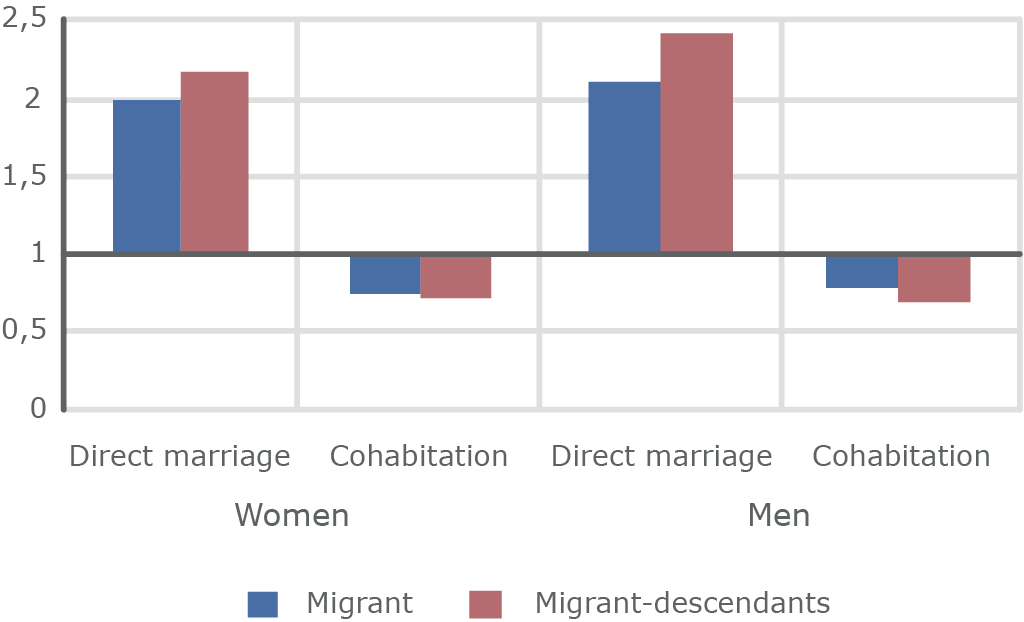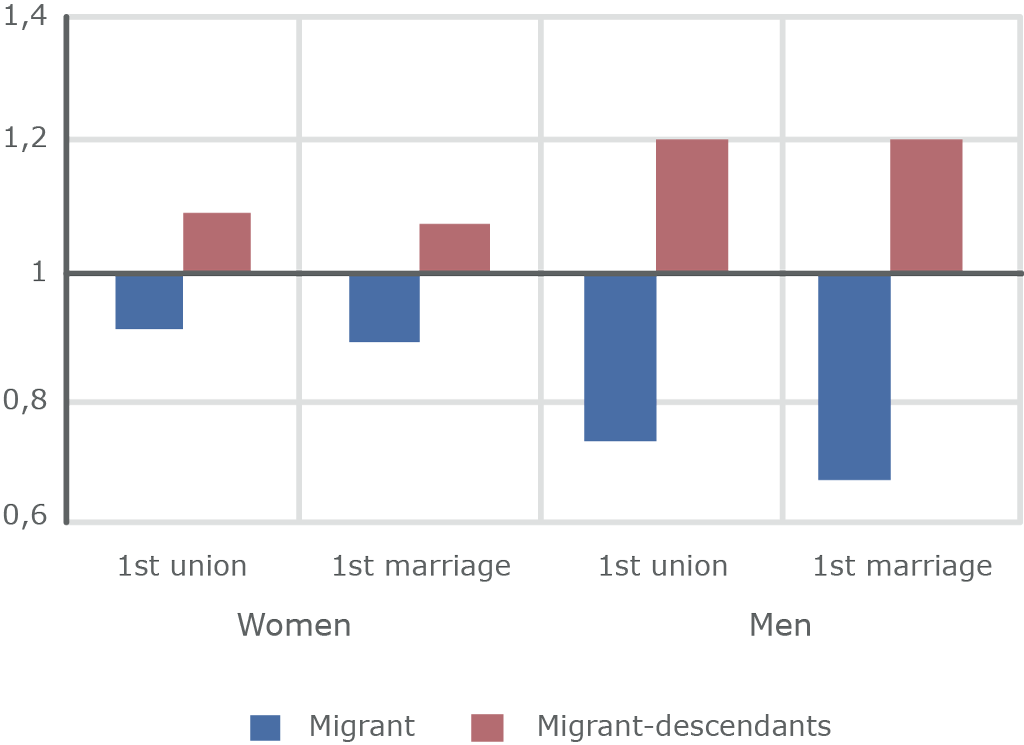How do partnership dynamics differ between migrants and natives? Are such differences the sign of a slower integration process of immigrants into the Estonian society? Leen Rahnu, Allan Puur, Luule Sakkeus and Martin Klesment show that new family patterns, such as non-marital cohabitation, are less frequent among immigrants in Estonia. These divergences between immigrants and native Estonians suggest that the ways in which migrants start their family life more accurately reflect the patterns of the country of origin than of those of the host society.
The authors also identify some signs of adaptation to the host society among immigrant descendants. For example, entry into first partnership and union dissolution resemble more the patterns followed by natives than those followed by their parents.
Divergences persist
In the 1970s and 1980s marriage was highly prevalent and occurred at relatively young ages in Estonia. It was only after the 1990s that the number of marriages began to rapidly decrease and the age at marriage started to increase. Cohabitation was also on the rise: Most Estonians who started their family life in the 1970s decided to start cohabitating rather than directly getting married.
In their study, Rahnu et al. found that the partnership patterns described above, typical of native Estonians, are significantly different from those of the immigrants living in the country. The descendants of migrants form their first partnership in an extent that falls in between the Estonians and the immigrants (Figure 1). The higher levels of first partnership formation amongst immigrants is mostly due to the fact that they are more prone to start family life by immediately getting married rather than cohabiting first (Figure 2). The evidence also suggests that, following distinction between direct marriage and cohabitation, the descendants of migrants exhibit no less difference from the native Estonians than their parents in the first generation. The outcomes of cohabitations also diverge: If migrants decide to cohabitate instead of getting married, their cohabitations last for shorter periods than those by Estonians.
Unlike for first partnership formation, differences between immigrants and natives in partnership dissolution are negligible and not statistically significant. But there is a sign of possible convergence between natives and immigrants’ descendants: the contrast between the latter and the former appears smaller than that between the natives and immigrants. Results for women show similar levels in union dissolution patterns between descendants of immigrants and native Estonians (Figure 3). In regards to men, union dissolution rates are somewhat higher than those of natives and significantly different from those of their parents.

Figure 1. Odds of transition to first partnership, Estonia, birth cohorts 1924-1983. (Note: 1 is the reference category (natives).)

Figure 2. Odds of transition to marriage and cohabitation, Estonia, birth cohorts 1924-1983. (Note: 1 is the reference category (natives).)

Figure 3. Odds of dissolution of first partnership and first marriage, Estonia, birth cohorts 1924-1983. (Note: 1 is the reference category (natives).)

*This PopDigest has received funding from the European Union's Seventh Framework Programme (FP7/2007-2013) under grant agreement n° 320116 for the research project FamiliesAndSocieties.
FamiliesAndSocieties (www.familiesandsocieties.eu) has the aim to investigate the diversity of family forms, relationships and life courses in Europe, to assess the compatibility of existing policies with these changes, and to contribute to evidence-based policy-making. The consortium brings together 25 leading universities and research institutes in 15 European countries and three transnational civil society organizations.